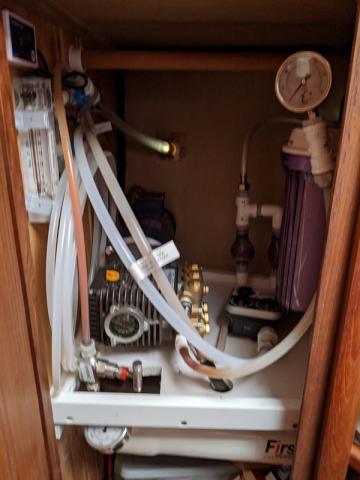In this post I will document the Seawater Pro watermaker that we installed one year ago. It currently makes 15 gallons per hour here in the Bahamas at about 850 PSI membrane pressure while consuming about 850 watts.
I ordered and installed the system in March 2019, probably total installed cost was about $3,100 and a solid week+ of learning, working and running to hardware stores.
- $2,575 to Seawater Pro. It looks like this $2395 item currently in their store is basically what I got. I would really recommend getting the "remote control" version which is basically a pretty panel to put the controls and gauges in, but it is $400 more and you have to draw the line somewhere.
- Base system price was $1,595
- $699 for the DC motor and brass pump upgrade
- $39 for the SW30-2540 membrane (an upgrade? I see they retail for more like $200 online?)
- $80 shipping and some tax were the remainder
- Additional costs rough estimates (one year ago by memory!)
- $250 for plumbing odds and ends not included "in the box"
- Boost pump is far from high pressure pump
- Had to split air conditioner sea water intake (do not run AC and watermaker at the same time)
- New dump overboard through the hull for salt water output
- New input into top of water tank
- Valves to direct product water overboard or into water tank
- Misc. to get house water to the system for flushing
- $250 for wiring
- About 30 feet of 2AWG marine wire
- Circuit breakers
- Compression lugs, heat shrink, looming, etc.
- $250 for plumbing odds and ends not included "in the box"
What the operating process looks like, plus notes about a few steps that we skip:
- Ensure needle valve is open (unrestricted).
- Ensure product water valves are set to flow overboard and put that dump hose out the v-berth hatch. (usually skip this and just dump straight into water tank...20 seconds of 2,000 TDS water is quickly diluted by the following hour or two of usually 100 TDS water)
- Turn on salt water boost pump.
- Verify that the pressure gauge before the salt water high pressure pump shows higher than 0 PSI (usually skip this, depends on cleanliness of sea water in the area).
- Turn on salt water high pressure pump.
- Tighten needle valve over about 20 seconds to bring pressure to 750-850 PSI, observing GPH meter rise to 15 GPH (or more, or less).
- Turn on the TDS monitor and observe it drop from around 2,000 to under 200.
- Open product water valve to water tank, and then close the one that dumps overboard. (usually skip this)
- Put away overboard dump hose. (usually we don't dump any water so skip this)
- Run for a long time, typically one to two hours. Monitor both low pressure and high pressure gauges every 20-30 minutes, and also listen to the sounds of the system for interesting changes.
- Loosen the needle valve slowly over 20 seconds to bring high pressure to 0 PSI.
- Turn off high pressure pump.
- Turn off boost pump.
- Flush system with fresh water. This ideally would mean doing something with the garden sprinkler timer but I haven't gotten that to work so I flip open a valve under the settee. (usually we skip this)
So basically we are doing two "naughty" things. We don't dump the initial product water overboard, but the math on dilution is quite convincing to me that it doesn't really matter, the water tastes fine, and we are generally healthy. And we don't flush with fresh water after running, but the system performance does not seem significantly degraded. Perhaps we will need to replace the $200(?) membrane earlier than the 5-10 years that people normally get out of them.
Our system has a 12V high pressure motor. At operating pressure this alone seems to draw about 800 watts (65A at 12V), with the boost pump drawing the other 50 watts. For our 4x 100Ah 12V lithium iron phosphate (BattleBorn) battery bank this is no problem. It may not work so well on smallish lead-acid battery banks, in which case using a generator and 120V AC pump would be wiser. If we run the generator our battery charger can put out about 90A so it can charge the battery a little in addition to keeping up with the watermaker draw. But mostly we get enough solar from our 1100 watts of panels to keep up with the fairly liberal demands of the two of us.
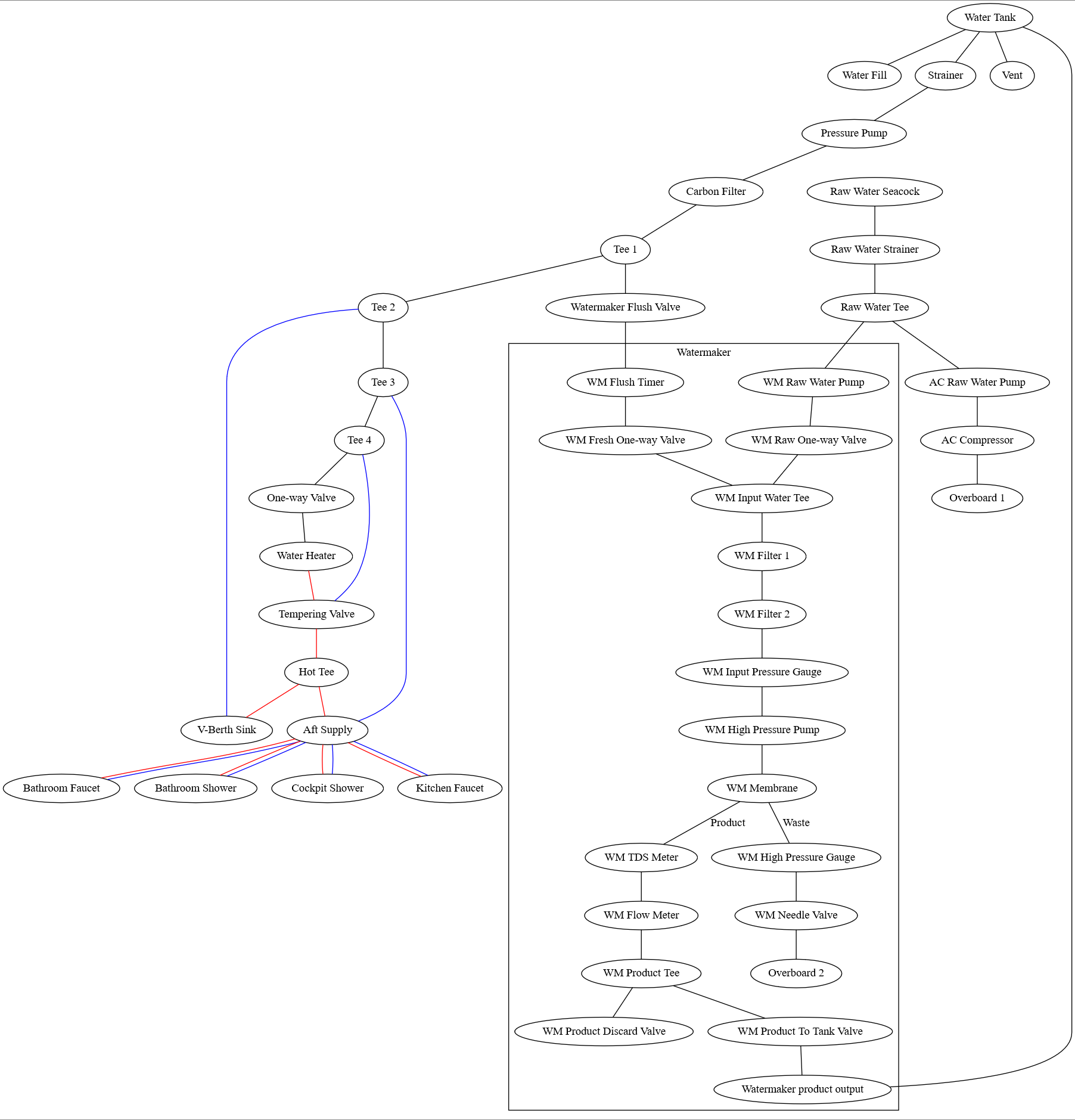
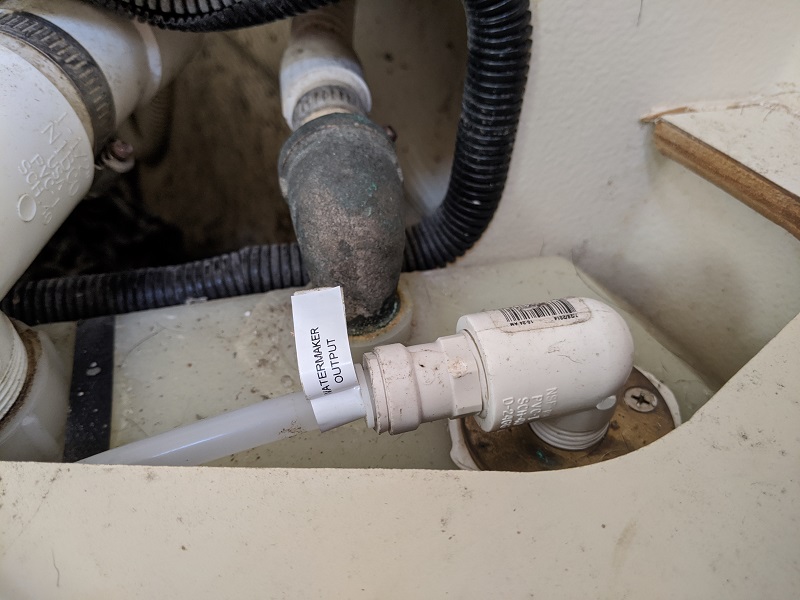


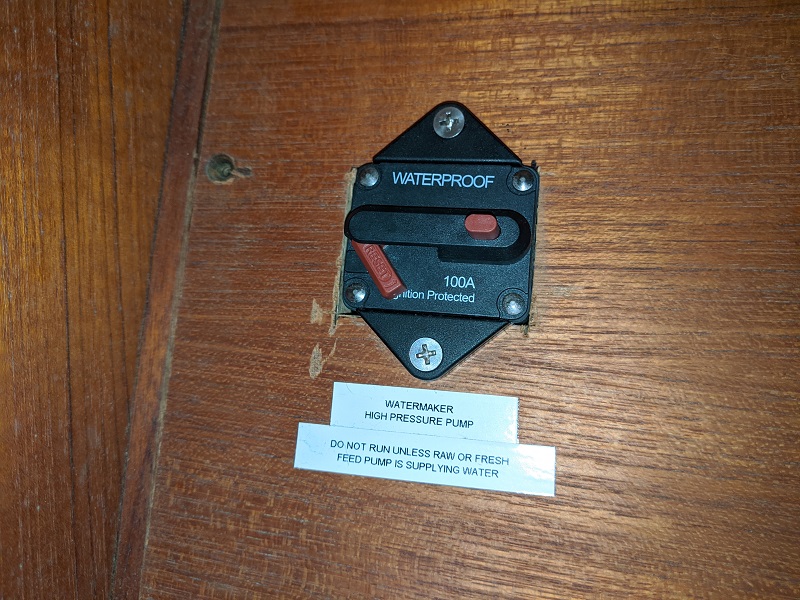
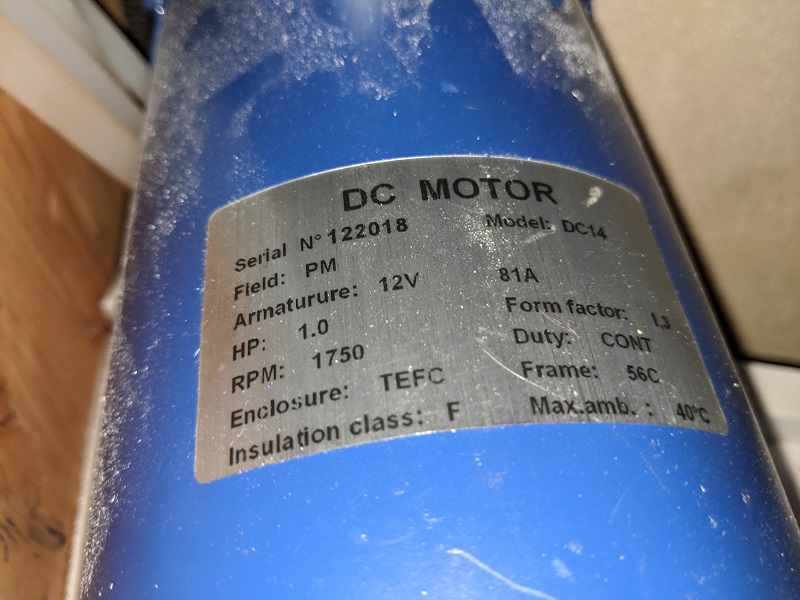
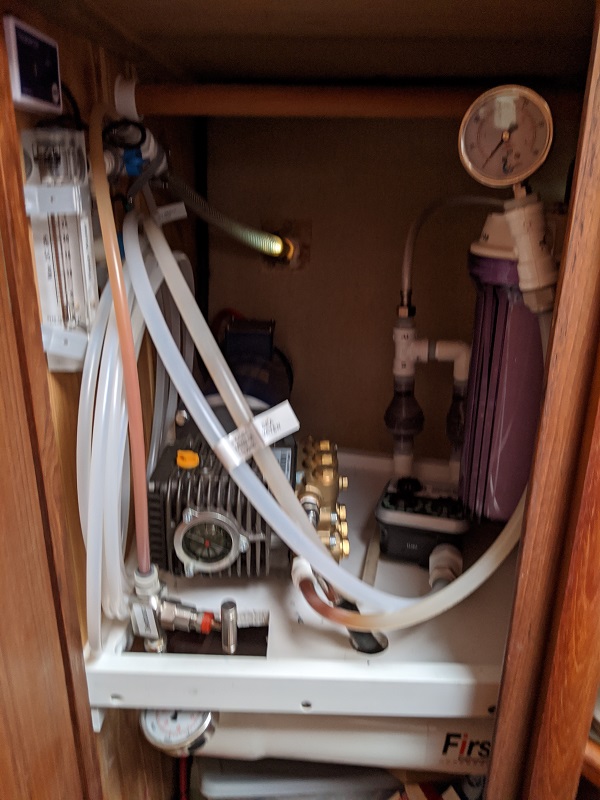
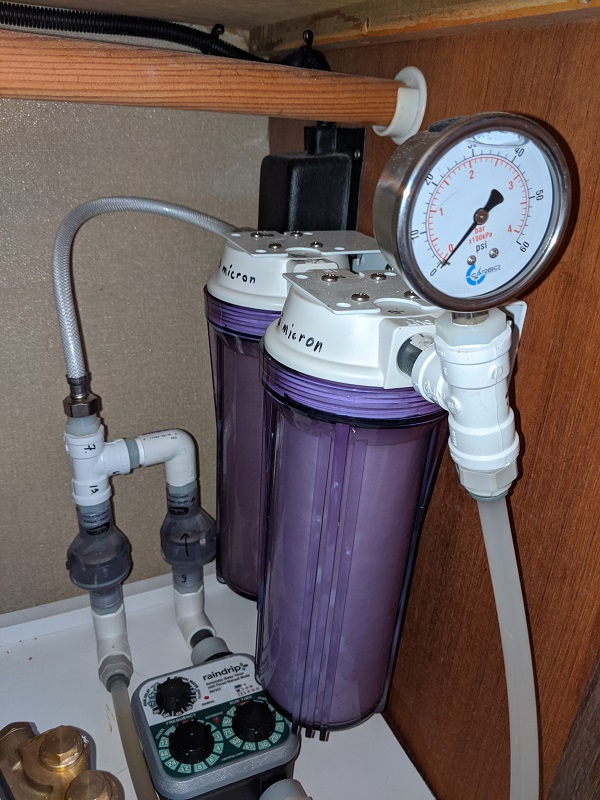
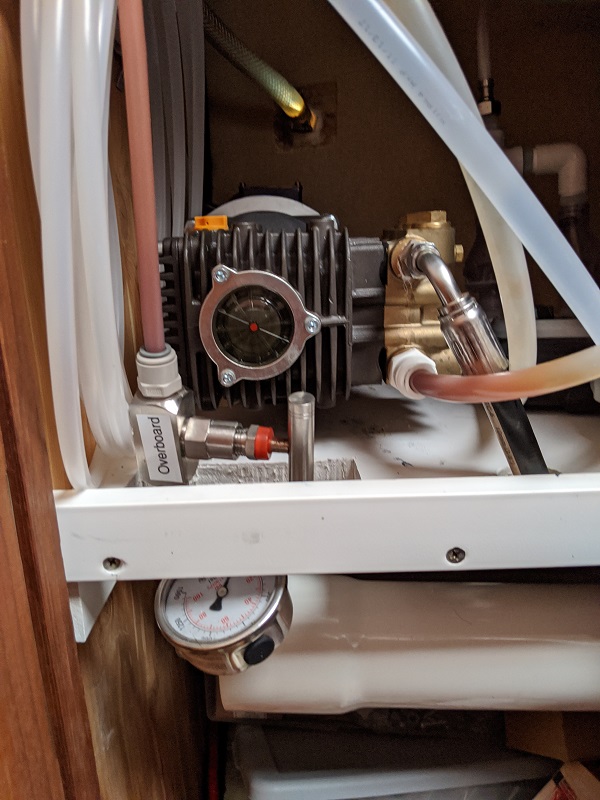
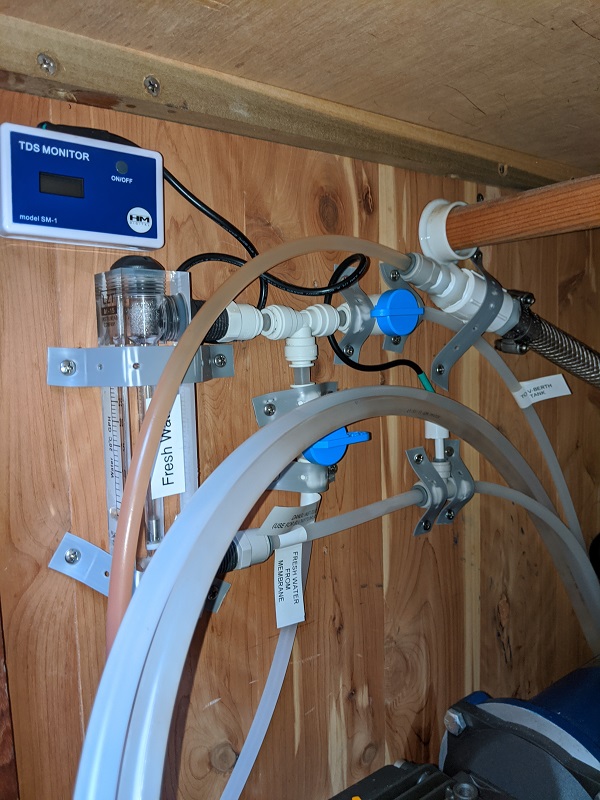
That's it!
